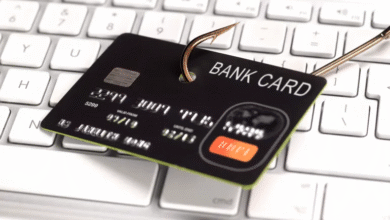The Hidden Dangers of Digital Devices: How Vulnerabilities Can Compromise Your Privacy and Safety


In one scene from the acclaimed film “Snowden,” the protagonist tells a colleague before deciding to defect from his intelligence agency and expose its electronic dealings: “It doesn’t matter who you are; every day of your life, you’ll be sitting in some database owned by an unknown entity, waiting to be scrutinized.”
The impact of this film was so profound that it prompted some individuals to place stickers over their laptop cameras, mistakenly believing this would safeguard them from potential breaches. But is that really enough?
For example, wireless chargers, which are convenient and increasingly prevalent in homes and offices, can pose a serious risk if compromised. A recent study revealed how a simple device could manipulate the charging process, causing your phone to overheat or even catch fire.
Conducted by a team of cybersecurity experts at the University of Florida, the study demonstrated how they could intercept the connection between the charger and the phone, sending false signals to trick the charger into delivering excessive power. This can lead to overheating and, in extreme cases, igniting a fire.
The researchers outlined various potential attack scenarios, which they dubbed “Volt Skimmers.” In these scenarios, a hacker could issue commands to the phone’s voice assistant, bypassing the charger’s foreign object detection mechanisms and exposing nearby items like credit cards or car keys to intense magnetic fields, potentially damaging them.
They tested several wireless chargers and phones from different brands and models, finding them all vulnerable to Volt Skimmer attacks. The researchers even created a prototype costing less than $10 that could easily be hidden or disguised.
Recent events in Lebanon, such as the explosion of pagers, have raised concerns about the possibility of compromising phones, potentially causing them to explode or be used for surveillance. However, the reality is far more complex than merely discussing smartphones.
The New Age Surveillance
In 2011, a research team from the University of North Carolina broke through the barrier between reality and detective fiction by developing a new algorithm that enables tiny cameras to capture what people are typing on their smartphones from relatively long distances. For instance, it could record someone texting on WhatsApp while standing in a subway or checking emails while sitting in a bank.
While it’s common for cameras to be present in such locations, this algorithm was able to stabilize and refine shaky images, utilizing vast amounts of data to fill in gaps in the text being typed, ultimately producing a clear, legible output.
Imagine if you were facing away from the camera, but someone next to you wore glasses that reflected your phone’s screen back to the camera. The algorithm could capture your finger taps on the virtual keyboard, analyze them, and produce the text you were typing. Initial trials with this new “I-Spy” mechanism were so successful that they retrieved data from individuals who were not part of the study but were simply seated nearby or on the same bus.
Now, let’s shift gears and delve into the development of cardiac devices, small electronic components implanted under the skin to monitor heartbeats and deliver precise electrical pulses when necessary. Since their inception in 1926, these devices have saved millions of lives. However, a significant leap occurred in 2006 when it became possible to manage these devices remotely without needing to extract and modify them surgically.
Yet, where there are wireless signals between devices, there is also the potential for interception by a hacker. This was confirmed in a research paper published in early 2019, where authors demonstrated the ability to compromise certain types of cardiac devices to validate this hypothesis. This team managed to disable the devices and drain their batteries quickly.
Even more alarmingly, these devices can be manipulated to deliver excessive electrical pulses, disrupting a patient’s heart rhythm and potentially causing arrhythmias. The U.S. Food and Drug Administration (FDA) has previously acknowledged the risks of hacking any wireless devices implanted in the body.
Vulnerabilities in Vehicle Security
On another front, Dr. Andry Rakotonirina from the QUT Road Safety Research Centre noted in a 2014 research paper that the security systems in current and future vehicles offer minimal protection against hacking, resembling the security level of desktop computers in the 1980s. Basic security requirements such as authentication, confidentiality, and integrity are weak.
Years ago, researchers Yoshihiro Kawamoto and Stefan Savage from the University of Washington managed to intercept computers in a standard car by tracking Bluetooth or radio signals and tire sensors. They could manipulate a range of systems, from altering speedometer readings to interfering with brake pressure and temperature sensors.
As the number of potential vehicle hacks continues to grow, a statistical review in Israel revealed that in 2019, while the total number of car hacks was relatively low, it was still 99% higher than the previous year. This trend is expected as the internet and social media increasingly infiltrate vehicles’ vital functions.
In a study published in July 2019 in the journal Physical Review E, researchers from Georgia Tech predicted that in the coming decades, automated driving systems and communication networks between vehicles would become widespread. They highlighted that a hacker could potentially paralyze an entire city by stopping just 20% of cars during peak traffic times—demonstrating that a cybercriminal need not access every vehicle; merely having a few connected cars is sufficient.
Your Household Devices as Potential Threats
You might think that none of this pertains to you, but consider the small computer inside your automatic washer, the smart TV in your living room, or the oven that halts operation when its sensors detect a specific temperature. If any of these devices haven’t entered your home yet, they soon will in the next wave of home automation.
What if someone could disable a small sensor in your oven? Or raise the temperature of your washer while extending its operation time? In 2014, security company Proofpoint revealed a cyberattack involving the compromise of “smart” internet-connected household devices, affecting over 100,000 tools, including televisions, media centers, routers, and at least one refrigerator.
Let’s take the question a step further: what is the role of a hitman? Traditionally, a hitman is someone trained to use weapons and conceal themselves in dark alleys and tall buildings to capture a target predetermined in advance. One of the primary challenges for assassination attempts is finding a way to conceal the crime to appear as an accident.
Today, the profession of a hitman may be evolving, leaving behind firearms and concealed weapons. The new hitman might be a skilled technical engineer acting as a hacker, sitting nearby to disable someone’s cardiac device, hack their car, or raise the temperature of their oven to cause a fire.
This is not a call to return to a cave-dwelling lifestyle but rather an insight into the new equations posed by the digital world. Imagine a balance scale with two equal sides—if you add too much to one, you must compensate on the other. The more you integrate into the digital realm, the greater the risk of being hacked and having your data stolen by third parties. This data could range from your phone’s temperature to the use of your microphone or camera to capture images of your surroundings.
The moment we decide to enter the digital world, we expose our privacy. The mistake lies in believing that this only happens when we access the internet through our smartphones or laptops. This misconception is frequent because the digital world encompasses everything we interact with, from our refrigerator and washer to online banking.
Luciano Floridi, a prominent professor of Philosophy and Ethics of Information at Oxford University, asserts, “Those who live digitally die digitally.”
Additionally, individuals tend to be less cautious about their online personas than in the real world. In a large sample from a recent electronic survey, 50% of respondents aged 13-17 shared personal information with strangers, including images, physical descriptions, phone numbers, birth dates, and addresses, while those who voluntarily shared information for a random survey would likely involve law enforcement if asked about the same information in everyday life.
The key takeaway is that every individual must recognize the importance of information security and its risks, putting in the effort to understand concepts like information technology, cybersecurity, and big data analytics. Gaining even a superficial understanding of data analysis is crucial. These issues not only help in securing your personal safety but also open opportunities for career development in an era that will undoubtedly witness significant changes in job hierarchies, leading to the potential elimination of some positions altogether.








